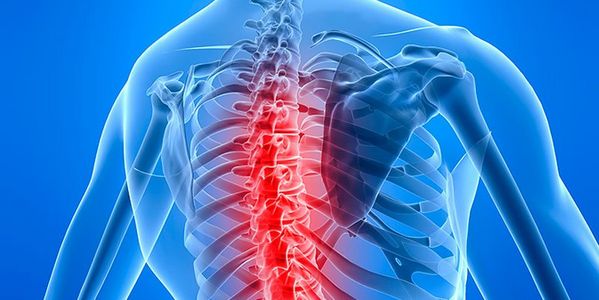Cerebral Palsy (cerebral palsy) is the treatment of disease. Symptoms and prevention of CEREBRAL PALSY

CEREBRAL PALSY is a group of diseases of the central nervous system, characterized by neprogressirujushhim defeat motor zones, motor pathways of the brain.
CEREBRAL PALSY-CEREBRAL PALSY-causes
- developmental patterns GM (brain);
- hypoxic-ischemic lesion of GM;
- infections of the GM in postnatal period;
- traumatic lesions of the GM in intranatalnom and postnatal period;
- iatrogenic causes;
- intrauterine infection (especially viral);
- Rhesus conflict (maternal-fetal blood incompatibility) with the development of hemolytic jaundice of newborn;
- toxic defeat GM (eg, saturnism).
One of the most serious risk factors for CEREBRAL PALSY is the prematurity of the child.
CEREBRAL PALSY-Symptoms
The severity of the manifestations of CEREBRAL PALSY associated with the degree of brain damage. Manifestations of the disease there is little noticeable in early childhood, but when mature nervous system the child become more obvious.
Typical delay unconditional reflexes, that disappear in the norm through 3-6 months after birth.
The main symptoms:
- Convulsions.
- Abnormal muscle tone.
- Skeletal deformation.
- Abnormal movements.
- Joint contractures (restriction of passive joint movement).
- Retardation.
- Problems with speech.
- Hearing loss.
- Swallowing problems.
- Visual impairment.
- Problems with control of bowel movements and urination.
- Dental problems.
CEREBRAL PALSY-Diagnosis
Sufficient for diagnosis of risk factors and symptoms specific motor disorders neprogressirujushhih. To help confirm the diagnosis of brain MRI, Brain ULTRASOUND (to exclude other pathology). Obligatory consultation genetics.
With the disease on MRI of the brain-wasting podkorkovuju korkov watch, false porjencefaliju, diffuse white matter density reduction.
CEREBRAL PALSY is a kind of disease
Depending on the area of brain lesions distinguish the following forms of CEREBRAL PALSY:
1. Spastic diplegia: characterized by lesions of the parts of the brain, responsible for motor activity of the limbs. This leads to a partial or complete paralysis of legs and hands. The most common form of.
2. Double hemiplegia: affects the large brain or whole organ. There is stiffness of the limbs: the child cannot keep your head, sit and stand.
3. Gemipareticheskaja form: affected one of the hemispheres of the brain with corks and podkorkovymi structures, responsible for motor activity. Limb hemiparetic patients manifested: suffers from one side of the body, Cross towards patient hemisphere.
4. Hyperkinetic form: the characteristic lesion of subcortical structures. Arise hyperkinesis-involuntary movements.
5. Atonicheski-astatic form: Cerebellar lesion. When this form is suffering motor coordination, the sense of balance, muscle atonia occurs.
CEREBRAL PALSY-actions of the patient
Continued monitoring is essential and professional implementation of all its recommendations.
CEREBRAL PALSY-Treatment
In the early stages of CEREBRAL PALSY treatment of the underlying disease, that is the cause of the disease.
The main task of treating CEREBRAL PALSY is the fullest possible development of skills of the child and its communication.
Apply:
- Massage.
- Therapeutic exercises (incl. Bobath-therapy).
- Use of technical devices: load costume, inflatable puppet, etc..
- Speech therapy job.
- Sessions with a psychologist.
In some cases, applied:
- Medicamental therapy: means to reduce muscle tone (ʙaklofen, implantation of baklofenovoj pumps, tolperisone).
- Medications botulinotoksina.
- Operative orthopedic intervention: tendon-muscular tummy, Arthrodesis, suhozhilnaja plastic, corrective osteotomy, surgical removal of contractures manually (Ulzibatu operations) or using distrakcionnyh devices.
- Functional Neurosurgery: selective nevrotomija, selective rizotomija, operations in the subcortical structures of the brain, chronic epidural spinal cord neurostimulation.
- Reflexlocomotion.
- Sanatorium treatment
- Animaloterapija.
CEREBRAL PALSY-Complications
The highest value in the development of motor complications have Dystrophic processes of skeletal muscle, that leads to the formation of rough scar tissue with multiple contractures. Developing warp nearby joint, bones. It's not only provokes breaches of movements, but also causes persistent pain syndrome, formation of antalgicheskih (internally) postures in patients.
Other effects of CEREBRAL PALSY:
- uncontrolled movements;
- abnormal muscle tone;
- impaired mental function;
- visual impairment, hearing, speeches;
- violations of acts of defecation and urination;
- convulsions;
- difficulty swallowing;
- emotional problems.
CEREBRAL PALSY Prevention
Prevention of CEREBRAL PALSY is the prevention and timely treatment of the above major causes.
